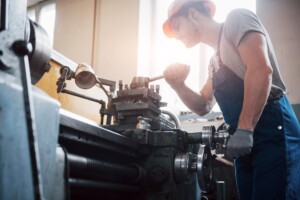
O-rings are one of the most commonly used sealing components in various industries, from automotive to aerospace. These small circular rings are responsible for creating a tight seal between two mating surfaces, preventing any leakage or contamination. However, like any other mechanical component, O-rings also require regular maintenance and inspection to ensure their optimal performance.
In this blog post, we will discuss the importance of checking your O-rings and provide some tips on how to properly inspect them without relying on bullet points or lists.
Why Should You Check Your O-Rings?
O-rings play a crucial role in maintaining the integrity of a system. They are often exposed to high pressures, extreme temperatures, and harsh chemicals, making them vulnerable to wear and tear. Over time, O-rings can become damaged or worn out, compromising their ability to create a proper seal.
Regularly checking your O-rings can help identify any issues early on, preventing potential leaks or failures that could lead to costly repairs or even safety hazards.
How to Inspect Your O-Rings?
Visual Inspection
The initial step in examining your O-rings involves visually inspecting them. This process is carried out by carefully observing the O-ring for any visible indications of damage or wear. Signs of a compromised O-ring may include the presence of cracks, tears, or flattened areas.
It is crucial to highlight that certain materials, like silicone and fluorocarbon, exhibit a higher susceptibility to developing cracks and becoming brittle as time progresses. Consequently, it is imperative to exercise additional vigilance when inspecting O-rings composed of these specific materials.
Physical Inspection
In addition to visual inspection, a physical examination of the O-ring is a valuable step to assess its condition thoroughly. When conducting this examination, carefully stretching or compressing the O-ring can help detect any changes in its shape or elasticity. This tactile approach provides a more comprehensive understanding of the O-ring’s condition.
It’s important to note that an O-ring that feels excessively stiff or overly soft could be a sign that it has reached the end of its lifespan, signaling the need for prompt replacement to maintain optimal functionality and safety.
Leakage Test
If you suspect that an O-ring may be leaking, a simple leakage test can confirm your suspicions. Begin by immersing the O-ring in a container of water, ensuring it is fully submerged. Apply gentle pressure to the O-ring while observing closely for any bubbles that may emerge. The presence of bubbles indicates a leakage, signaling that the O-ring requires replacement to maintain optimal functionality and prevent potential issues.
When to Check Your O-Rings?
As a general rule, O-rings should be checked and replaced regularly, especially if they are used in critical applications. However, there are certain situations that warrant an immediate inspection of your O-rings, such as:
- After exposure to extreme temperatures or chemicals
- When there is noticeable damage or wear on the O-ring
- Before and after performing maintenance or repairs on the system
- When there is a change in operating conditions, such as pressure or temperature
Maintaining and inspecting your O-rings is not just a routine task—it’s a critical measure to prevent failures, leaks, and potentially costly repairs. Regular visual, physical, and leakage tests are simple yet effective methods to ensure the integrity and functionality of your O-rings. Remember, the longevity and reliability of your equipment depend significantly on these small but mighty components. By adopting a proactive approach to O-ring maintenance, you can ensure the seamless operation of your systems and safeguard against unexpected downtime. Always stay vigilant, and don’t hesitate to replace an O-ring at the first sign of wear or damage. After all, in the grand scheme of things, it’s a small step that can prevent major issues.
Contact us for more information.